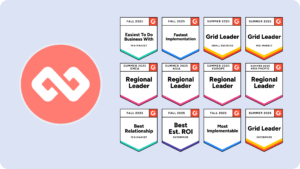Enhancing employee connection is critical when building a strong organizational culture. One invaluable tool for creating meaningful employee connections in the workplace is mentoring, providing employees with the opportunity to learn and grow in their roles while also creating a supportive environment that encourages communication and collaboration. However, to ensure a successful mentoring program, it’s crucial to establish clear goals and expectations, utilize technology that can support relationships no matter when they enter the program, provides resources that engage employees, and evaluate how well the program is working.
In this article, we’ll explore the importance of employee connection, benefits of mentoring, how to build a mentoring culture, strategies for engaging employees in the program, and best practices for evaluating its success.
Understanding the Importance of Employee Connection
Building strong connections among employees is vital to the success of any organization. When employees feel connected to their colleagues, they are more likely to engage, collaborate, and contribute to the shared goals of the team. This sense of belonging not only enhances individual job satisfaction but also boosts the overall morale and productivity within the workplace.
Have you ever noticed a difference in the atmosphere of teams that communicate openly versus those that don’t? It’s like night and day! Healthy relationships lead to higher performance, while disconnect can cause friction that hampers progress.
Fostering connections among employees can significantly reduce turnover rates. When individuals feel valued and part of a cohesive unit, they are less likely to seek opportunities elsewhere. This retention not only saves the organization the costs associated with recruiting and training new hires but also preserves the institutional knowledge that seasoned employees bring to the table. Organizations that prioritize employee connection often see a ripple effect, where satisfied employees become advocates for the company, enhancing its reputation and attracting top talent.
Strong employee connections can also serve as a catalyst for innovation. When team members trust one another and feel comfortable sharing ideas, they are more likely to brainstorm creatively and push the boundaries of conventional thinking. Collaborative environments encourage diverse perspectives, leading to unique solutions that can propel the organization forward. In contrast, teams that lack connection may struggle to communicate effectively, stifling creativity and hindering the development of new initiatives. Thus, investing in relationship-building activities and open communication channels is essential for nurturing a culture of innovation and continuous improvement.
Creating a Culture of Trust and Openness
A culture of trust and openness is the bedrock of strong employee connections. When team members feel safe to express their thoughts and opinions without fear of judgment, they are more likely to engage in meaningful conversations. Cultivating this environment requires consistent effort and vision from both leadership and employees.
How can organizations foster such a culture? First and foremost, leading by example is crucial. Leaders should consistently practice transparency and humility, encouraging team members to do the same. Regular team meetings, feedback sessions, and informal gatherings can also help promote open dialogue.
Moreover, creating safe spaces for discussions taps into the potential of mentoring relationships. Mentoring can bridge gaps in communication and help employees feel more connected through shared experiences. Establishing trust enhances creativity and innovation, allowing your organization to flourish.
The Impact of Leadership on Employee Relationships
Leadership plays a pivotal role in shaping employee relationships. Effective leaders inspire by fostering an environment where team members feel valued. They create opportunities for employees to connect and collaborate while providing a platform for growth.
Leaders who prioritize employee connection often see a positive ripple effect throughout the organization. They cultivate strong teams, which leads to better problem-solving and innovation. Think about it: when employees trust their leaders and each other, they are unlikely to shy away from sharing ideas or solutions.
Furthermore, implementing mentoring programs can amplify this effect. Leaders who actively support a mentoring culture signal to employees that development is a priority, strengthening their connections.
Overcoming Barriers to Employee Connection
Despite the undeniable benefits of strong employee connections, barriers often stand in the way. These can range from remote work dynamics to cultural differences. Understanding these obstacles is key to overcoming them.
For example, remote work can lead to feelings of isolation. To combat this, organizations can invest in technology that connects employees through virtual meetups and collaborative platforms. Are your employees feeling left out? Perhaps it’s time to prioritize regular check-ins and team activities.
Cultural differences can also pose challenges. Emphasizing inclusivity and respect for diverse backgrounds not only fosters connection but also helps create a more harmonious workplace. A solid mentoring program can help bridge these gaps, enabling employees to learn from one another’s experiences.
The Benefits of Mentoring on Employee Connection
In many ways, our workplaces have never been more connected and yet more distant thanks to globalisation and technology. Closing the distance between employees in a remote setting, can be challenging and finding ways to come together meaningfully, becomes more important.
In recent years, mentoring programs have proven to be a powerful way to foster meaningful employee connections between employees and create a supportive work environment. Not only does it allow employees to learn from each other, it can also help them develop their skills and increase job satisfaction. In addition, mentoring serves as an effective form of career development, enabling employees to pursue new opportunities and expand their horizons.
Perhaps more importantly in some ways, mentoring often has a positive impact on the organization as a whole. By providing employees with the opportunity to build deeper relationships, it can create a culture of trust and respect. A feeling that ‘someone has my back’ or cares about my development in an objective way. This can lead to improved morale, increased collaboration, and a greater sense of belonging across the organization.
Mentoring has a profound impact on employee connections and overall workplace dynamics. Through mentoring relationships, employees gain insights, expand their networks, and develop essential skills.
Mentoring also encourages sharing of knowledge and experience—two vital components of fostering strong connections. When employees mentor each other, they build rapport and understanding, enhancing collaboration.
Mentoring also serves as a crucial tool for onboarding new employees, helping them integrate into the company culture more seamlessly. Taking the time to mentor not only empowers newcomers but also strengthens existing relationships within teams.
Building a Mentoring Culture to Lift Employee Connection
Establishing a mentoring culture requires commitment and foresight. Key to this process is developing clear goals and expectations for the program. Organizations should consider what they hope to achieve through mentoring—be it improved performance, increased retention, or enhanced employee satisfaction.
Establishing guidelines for the program is often helpful, such as setting the expectation of how often mentors and mentees should meet or what topics could be discussed. This helps all participants understand what they are expected to achieve or simply what to expect from participation. If you’re using a tool such as Mentorloop, this will mostly be done for you through Nudges and Milestones. However, regular communications from the program coordinator always helps.
Once goals are set, identifying suitable mentors and matching them with mentees is essential. An alignment in goals and skills is incredibly important when it comes to matching, but depending on your program’s objectives, other factors may play a crucial part as well.
It also helps to ensure your mentors and mentees are equipped with mentoring resources. When they know what to do, they can proceed in their mentoring journey with confidence and purpose. On Mentorloop, your mentors and mentees can complete their mentor/mentee training in their own time and access hundreds of resources that will help them connect with their mentoring partner and have a productive mentoring relationship.
Strategies for Enhancing Employee Connection in Mentoring Programs
To ensure that employees are engaged in the program, it is important to provide incentives for participation. This could include offering rewards such as recognition or paid days off for mentors or mentees who actively participate in the program. Additionally, providing training materials or other resources can help participants better understand the program and its goals.
It is also important to promote the program throughout the organization and encourage participation from all levels of staff. This could include sending out emails or holding meetings where people can learn more about the program and how they can get involved.
For tips and strategies for this, download our free Marketing and Recruitment Guide!
Just having a mentoring program isn’t enough to encourage employee connection, program coordinators need to play a role in enabling this as well.
One way to do this is to encourage mentors and mentees to establish regular check-ins and meeting, maintaining an open line of communication. On Mentorloop, you can do this through our seamless Calendar integrations, allowing program participants to schedule recurring meetings with ease.
Don’t underestimate the power of celebration! Encourage mentoring partners to celebrate their wins and milestones in their mentoring journey. This helps reinforce the value of these connections and the efforts they put into their relationships. On Mentorloop, mentors and mentees are encouraged to do this quickly and easily via the Share to LinkedIn feature.
Incorporating feedback mechanisms is also crucial. Soliciting and acting on feedback demonstrates that the organization values employee input, further solidifying their connections.
Evaluating the Success of Your Mentoring Program on Employee Connection
Finally, evaluating the success of your mentoring program is essential to understanding its impact on employee connections. Metrics such as participation rates, employee satisfaction surveys, and retention rates provide valuable insights.
Evaluate your program on a regular basis. This could include conducting surveys or interviews with participants to get their feedback on the program’s effectiveness. It is also important to track progress towards goals and measure how well mentors and mentees are helping each other achieve those goals. With Mentorloop, this is made easy for program coordinators as Mentorloop does all of this for you. Mentorloop regularly collects feedback at key moments in the mentoring relationship as well as tracks participants’ progress towards their goals.
Finally, it is important to review any data that has been collected on an ongoing basis in order to determine whether changes need to be made in order to improve the program’s effectiveness. This could include making adjustments to the program’s structure or providing additional resources for participants. On Mentorloop, your real time data is made actionable through Insights that guide you on how to use your mentoring programn data.
Mentoring stories can also offer both inspiration and proof of the program’s effectiveness. Sharing these narratives can build momentum for the program and encourage others to engage in the mentoring process.
More Signs of a Successful Culture of Mentoring
- Individuals are building their personal advisory boards by having multiple mentoring relationships
- Your mentees are progressing by turning into mentors themselves
- Your program Sentiment is above industry average
- You have participants referring others into the program to join
Ultimately, the heart of any organization is its people, and fostering strong connections among them will pave the way for future success.
Are you ready to take the first step in building those connections today?
Ready to elevate the connections within your organization and see the tangible benefits of a robust mentoring program? Mentorloop is here to guide you every step of the way. Our platform is designed to help HR and L&D Leaders, Functional Leaders, Community Managers, and all professionals dedicated to fostering growth and development. With Mentorloop, you can effortlessly start, manage, and measure the success of your mentoring initiatives. And if you’re part of a Charity or Nonprofit, our Community Support Program is specially tailored for you. Don’t miss the opportunity to transform your workplace dynamics.
Book a Demo today and start your journey towards a more connected and successful organization!




